Archaeology
Legend of the Lost Dutchman’s Goldmine!

Please Subscribe to our channel – and we would love your comments either here or on YOUTUBE.
The Legend of the Lost Goldmine
You don’t have to be a pirate to feel the lure of a treasure hunt. From the time we’re kids and into adulthood, we’re captivated by riddles and puzzles, hard-wired with the need to seek and solve.
Some people have made a career of looking for lost treasures – even the legend of lost treasure. One such legend – The Lost Dutchman’s Gold Mine – has seduced hundreds, many dedicating their lives in pursuit of a rich gold mine in the Superstition Mountains, in Apache Junction, Arizona.
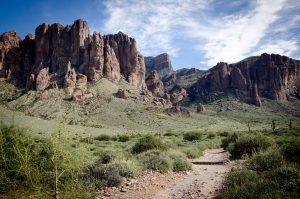
The clues and lore have kept the legend and its search for treasure alive for 125+ years. And yet, still, the simplest answers are unknown. Does it exist? Is it rich or empty?
>>>>TEASER: We may SOON have many answers! But you must follow the next two segments and the source of that story (details coming) to find out.
The treasure has been the infinite mystery and savory story – a concoction of disappearances, murder, contradicting stories, hidden gold, obsession, and more. It’s a rich story that goes as far back as Ancient Indians and continues to the current day. Around 100 books have been published about the story and, according to a folklore historian, it’s 6 times more told than Captain Kidd’s buried treasure.
The Original Dutchman
The legend of the Lost Dutchman’s Goldmine began with a German immigrant named Jacob Waltz (1810-1891). Waltz was a gold prospector who came to Arizona around 1868.
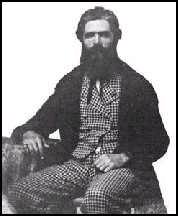
He claimed to have located a rich vein of gold in the Superstition Wilderness. There are stories of him selling small quantities in Florence, where he lived, and giving mysterious clues as to its location. It’s estimated he turned in $250,000 worth of gold. This would be the equivalent of around 5.5 million in 2020.
Many believe Waltz learned of the mine and its location from two members of the Peralta family who, at one time, owned mines in the Superstition prior to the land becoming US Territory (Treaty of Guadalupe Hidalgo). Some believe Waltz paid for the location of the mine. Others believe he killed for it.
Deathbed Map & Ore
He kept the location secret until his deathbed when he drew a map for Julia Thomas, his caregiver. Thomas searched for the mine without success and later sold copies of the map for $7, advancing the legend whose characters, maps, twists and turns have since multiplied and spread like the sprawling roots of a Banyan tree. The story is anchored and alive, and the Superstition Mountain Museum holds much of its lore and maps, including a replica of the much-debated Peralta Stones.
The legend holds that beneath the deathbed of Jacob Waltz was 48 pounds of gold ore. Some specimens were made into jewelry – a ring, cufflinks, stickpin, stud – and a matchbox.
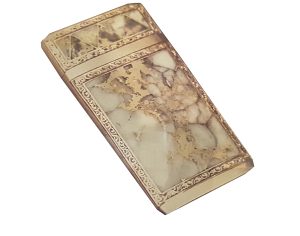
The matchbox was sent off for testing to determine the source mine of the gold. It’s been said that a good assayer can tell, based on its mineralization, not only what mine a specimen came from but what level of the mine it came from. One could say gold has a fingerprint or a DNA.
It was determined that the gold in the matchbox is from an unknown source. It’s as if there remains a hidden mine in the Superstition Mountains. The story goes that the mine still holds a $200 million dollar treasure.
The Apaches
Before any gold-seeking dutchman, the mountain was home to the Apache and often trampled by the rivaling Pima Indians and, later, the Peralta family from Mexico. It’s widely believed that the Peralta’s had 18 mines in the area and that, during a routine expedition, a large party of Mexicans were ambushed by the Apache in 1848. All were killed except for a few Peralta family members.
The Apache Distinguished Friend from Foe, by gifting gold to a Spanish-born doctor in gratitude. Dr. Thorne befriended and often aided wounded Apache warriors. And, in 1865, after helping an important tribe member, the doctor was blindfolded and brought to a cavern. Once there, he could take as much gold as he could collect. It’s said he filled his long underwear. He later traded this for bank drafts in San Francisco, totaling $6000.
Dr. Thorne was allowed twice along the way to remove his blindfold. In doing so, he noted an outcropping that he described as a Sombrero. Many believe the “Sombrero” seen by Dr. Thorne is one in the same as another peak named Weaver’s Needle.
Are there Curses at Play?
The gold mine started becoming a myth after Waltz’s death in 1891. The allure of gold has claimed the lives of an estimated 600, and the clues left behind by Waltz have not resulted in finding the source of his gold. Or at least not that we anyone has acknowledged.
For the many who’ve attempted to prove the legend true, the curse of Thunder God seems in place. Some Apaches believe the hole to the underworld is in the Superstition Mountains and that a Thunder God watches over the mountain. People have vanished, not to be found until months or years later, their remains in mysterious conditions. Several have been decapitated, the skulls separated by up to a mile from the body. Also reported are abandoned camps, bloodied blankets, skulls with bullet holes, remains wedged in crevices, reports of snipers, and rolling stones that appear pushed from above. The mountain seems to bring agitation to many, with conflicts between prospectors, even partners, which resulted in attempted murder or bloodshed. Some were institutionalized after returning from an expedition.
A different curse, known as the Dutchman’s Curse, is said to affect those who find the gold. Such demise might’ve been the case for Adolph Ruth who, after acquiring a map from a Peralta, ventured into the mountain in the hot summer of 1931. The 76-year-old disappeared. His skull was found six months later with 2 bullet holes. The remains of his body were ½ mile away. There was no map, but he had a notebook with the handwritten words: Veni, Vidi Vici. I came, I saw, I conquered.
Weaver’s Needle
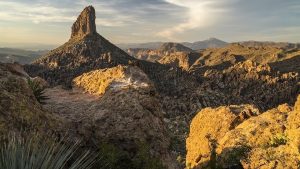
The Weaver’s Needle is a butte outcropping 1000 feet high and is said to play a prominent role in locating a rich vein of gold. The hunt for gold around this area has been pursued by hundreds (possibly thousands), likely a result of the handwritten notes of Adolph Ruth:
It lies within an imaginary circle whose diameter is not more than 5 miles, and whose center is marked by the Weavers Needle.
Lost Duchman Gold Mine Found?
Not every dutchman is drawn to the Needle.
Next week we’ll share the journey of a team who’ve walked their own path and who claim, “for the first time ever, there is undeniable physical proof that the mine exists.”
Many think they’ve located the Lost Dutchman’s Mine but this group is the first to corroborate many of the most-accepted clues (and some maps) with markers and monuments at the site. And that’s not all! There’s more than mere gold to this story.
The one who follows the crowd will usually get no further than the crowd. The ones who walk alone are likely to find themselves in places no one has ever been. – Albert Einstein
Juliana is an entertainer and writer. She’s currently working on a book about her Life With A Monkey. Check out her website at www.julianafay.com.
Archaeology
Forrest Fenn’s Treasure Found! But is it a Hoax?
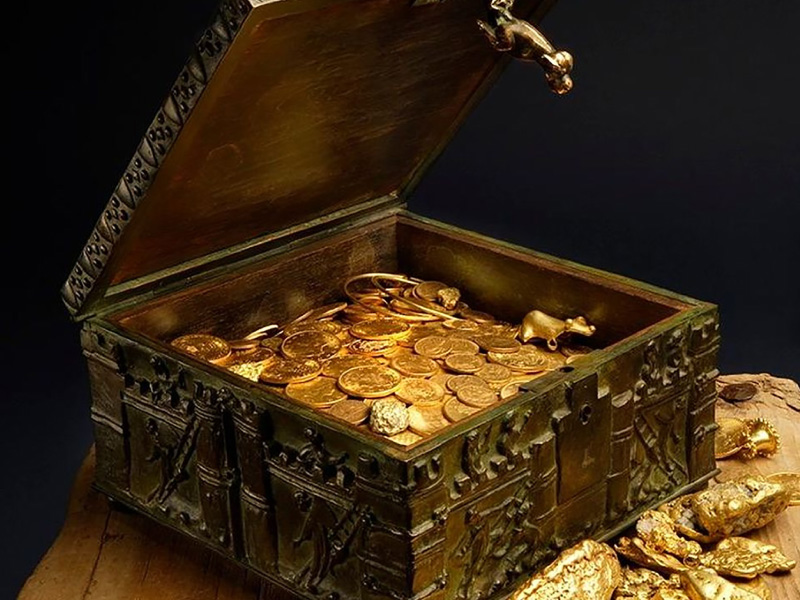
If you enjoy this story and want to support us – please CLICK THE Youtuvbe BUTTON BELOW AND SUBSCRIBE TO OUR YOUTUBE CHANNEL. We are posting new segments EVERY THURSDAY when it airs on Ozarks Fox AM!
Forrest Fenn’s Treasure Chest has been found! But the mystery remains! WHO found it? And WHAT was the Solve? Treasure hunters are seeking closure on this millionaire’s bounty purportedly hidden in the Rocky Mountains. Some are filing lawsuits, and some claim the entire thing was a HOAX! There was no box. The Thrill of the Chase Treasure Hunt has consumed an estimated 350,000 hunters who are navigating the frustration of few answers. The Secret remains.
We talked to FF Treasure Hunter, Glenn Worthington, who knows how to find diamonds in Arkansas! But his expeditions to the Rocky Mountains unearthed treasure more precious than gold.
Ancient Civilizations
Legend of the Lost Dutchman Gold Mine Parts 2 & 3: Finally Found!

To see PART 1, Click Here
Please Subscribe to our channel – and we would love your comments either here or on YOUTUBE.
Finally Found Lost Dutchman Goldmine
The Conclusion of a Legend & Unveiling of a new Mystery
Here amongst this vast maize of volcanic interior, fixed and clinging to the mountain side, flanked on one side by a very small almost invisible ledge is the “Lost Dutchman Gold Mine,” like a small bird’s nest perched in the middle of a forest of giant oaks, concealed by the natural elements – it obscures itself from all beasts of prey, especially man.
– Excerpt from Arcana Exploration Website
A Spark of Intrigue
Arcana Exploration & Discovery is a tight group of friends from central Ohio. They are ordinary guys with ordinary jobs who, in the spirit of comradery and adventure, journeyed in fun to solve a 128-year-old mystery.
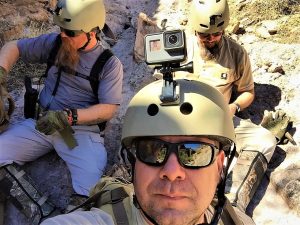
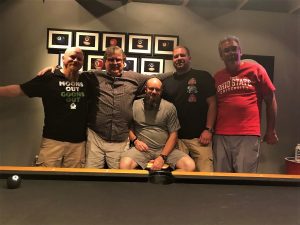
Credit: Arcana Exploration & Discovery
Their ringleader, Jeff Howlett, became fascinated with The Legend of the Lost Dutchman’s Goldmine after stumbling upon the story in a blog. Jeff spent the remainder of the week reading up on the legend and, by week’s end, he’d formulated his own hypothesis about the location of the elusive mine.

Jeff Howlett, Arcana Exploration & Discovery
This isn’t a story about gold, though all evidence points to the legendary Lost Dutchman’s mine. It’s an account of friendships and unforeseen treasures – It’s a tidy bow on a legend that, shockingly, delivered a new riddle to unwrap. The Arcana team has uncovered archeological evidence that may change history books!
Oh, and there might be gold too.
Backwards: Strategy and Disability
The Legend of the Lost Dutchman consumed Howlett for weeks. He became a Dutchman, developing a hypothesis and theory of his own. Howlett kept a big picture view and stayed away from locations, like Weaver’s Needle, that so many others had been drawn towards. Rather than focus on the theories of others, he dove deep, researched further back in time. He studied the Meso Americans, Conquistadors, Jesuits, and Apache – their travels and customs. It turned out to be a smart strategy. He drew a hypothesis that walked the team directly to the site. He attributes his success, in part, to his dyslexia, which allows him to see things differently.
“Sometimes those things are a gift. I’ve been able to figure out, see things other people can’t. And that’s exactly what I did here. And part of my (approach) is to come at it from a different direction, backwards.”
– Jeff Howlett
He was able to piece together information in a way that no other Dutchman had done.
What sets the Arcana Exploration team apart from all rest, is they have PROOF – undeniable physical proof that Jacob Waltz’ mine exists, and that many of the most-accepted clues can be substantiated by physical evidence on the ground.
Something Quirky
Arcana Exploration has made 7 expeditions since 2015 (an 8th planned in 2020). Incredibly, the team found the site their FIRST time out!
It’s rugged and dangerous terrain. The mine cannot be seen with Google maps. Nor can many of the clues and markers because so much of the area is shaded. Finding it requires boots on the ground, life-endangering climbs and creative navigating.
Howlett describes having goosebumps when hit with the realization that he was standing at the site of the 125-year-old mystery. Looking around, he ruminated on the words of one author who’d penned there’d be some quirky reason, a natural fluke why the mine was so hard to find and that someday someone would figure it out, put the pieces together.
Howlett was that someone and this was that day. And he was seeing firsthand that there was, in fact, a quirky explanation for its elusiveness – a quirk he’d hypothesized months ago!
That Quirky Reason isn’t a reference to the natural terrain. It is something else. Something Howlett is, yet, unwilling to share. He’ll disclose that and many more surprises in the upcoming book, ARCANA.
Arcana (n.) – hidden things, mysteries, 1590s,
a direct adoption of the Latin plural of arcanum “a secret, a mystery.”
The Elusive Mine
Mother nature, her overgrowth, and the 7.2 Earthquake of 1887 has played a role in hiding the mine. Even Jacob Waltz, the original Dutchman, said the mine would never be found by a miner, that you could be standing 20 feet away and not see it.
No ladder is needed to get to the mine.
(one of many clues found in the pages of the legend)
The mine access is an 18-inch vent hole that the Dutchman claimed to have chiseled wider, to 20 inches, so he could fit through and descend the shaft – so narrow, a ladder is unnecessary. The vent hole sits 12 feet above a dangerous ledge and is hidden by brush. Waltz further cloaked its existence, filling the opening with rock. This was validated by the team on their 7th Expedition.
Arcana Exploration, like the Dutchman, is keeping the location under wraps for now. Not so they can collect gold; their motivation has always been a shared journey between friends. Besides, it would be illegal to dig or go into the shaft even if that were the intention.
The team is working to validate more clues and complete historical documentation (Keep Reading!) before they turn it over to the state.
The Proof: Reverse Engineered
The biggest shock for the Arcana team was that so many of the clues are TRUE and ACCURATE! For the first time ever, the clues match. Howlett contends that “just finding a mine of any type would mean little if it couldn’t be linked to at least a couple dozen clues.”
Arcana Exploration & Discovery has substantiated many of the clues about the location of Jacob Waltz’ elusive mine. Mostly, the clues are difficult to follow, hidden by time and nature. But once the location was found, many clues fell into place; they could be reverse engineered. Howlett and his team have been able to match several clues with the physical evidence on the ground. That’s not to say the clues weren’t helpful in locating the site, because they were! But Howlett wouldn’t divulge which ones. We tried!
Until the book comes out, you can read about the (so far) 24 substantiated clues outlined at the Arcana Website. While Howlett gives away a lot of details, there’s plenty of hidden meaning and innuendo to feel like a treasure hunter yourself. Arcana has an 8th Expedition planned to document remaining clues.
The Maps are Relevant
In addition to matching up clues to the site, Arcana has determined that six of the 18+ maps relating to the legend are relevant. Howlett is, understandably, holding his cards close. He won’t divulge ALL six of the maps, but he identified two highly significant maps, both of which lead to the same bird’s nest:
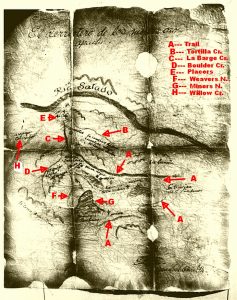
Fish Map
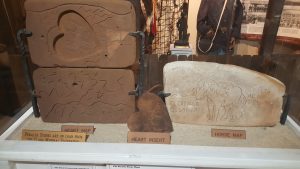
Peralta Stone replicas, Superstition Mountain Museum
Evidence of Jacob Waltz at the site
We may never know exactly how Jacob Waltz found the mine – which map led him there or how the map came into his possession. Still, could just anyone find the mine given the same map? Or did the Dutchman possess advantages – a sensitivity to things out of place, ability to see the bigger picture, improved pattern recognition – allowing him make sense of something quirky about the mine’s placement? Again, we may never know.
What we do know is that Waltz was there. This is evidenced by the rocks piled up in the vent hole and the chisel marks around it, as documented by Arcana Exploration. The Dutchman said that he’d chiseled the opening wider and that he’d filled in the hole to conceal it.
An UNTOLD History
Howlett’s historical research and hypothesis led the Arcana Team to, not only the Lost Dutchman’s Gold Mine, but to a bigger discovery – an historical treasure – that heralds a story separate from the gold mine. Arcana found evidence of other groups, centuries apart, who’ve converged upon the same area as the Dutchman. This is HUGE! History changing! The search for the mine led Arcana to ancient and important natural and man-made structures that might’ve otherwise been lost to time, hidden in the Superstition Mountains.
These are preliminary assumptions (based on extensive exploration) made by Jeff Howlett and Arcana Exploration, with the help of professors in Archeology and History. Howard Graves, a published historian and editor of Howlett’s upcoming book, noted the following:
Arcana’s discovery appears to be a rich opportunity for shedding more light on the interaction of Mesoamerican cultures with those of the American southwest.
– Howard Graves, an excerpt from a letter
Howlett contends, the real work and discovery will be done by archeologists and other specialists once Arcana Exploration has turned everything over to the state. He believes the site will become a historical landmark that will be off limits to the public and will likely be an archaeological site for years to come.
Shocking Discovery & Exclusive Photo!
Arcana Exploration was shocked to discover evidence of ancient peoples on site. The following EXCLUSIVE and NEVER BEFORE SEEN image was released to Intrigue Journal.
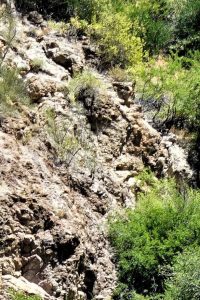
Credit: Jeff Howlett, Arcana Exploration & Discovery
What looks like a small rock carving on a hill is a nearly 4-foot tall structure that Howlett believes is the Thunder God, worshipped by the Apache. What’s more is the Apache spoke of a sacred place of the ancients. Howlett revealed to Intrigue Journal that evidence on site suggests the ancients were Meso American people and that it’s plausible they were the sculptors of that monument. If confirmed, this would change history because, until now, Meso Americans were not known to have been in that area. There are other markers and monumental evidence on site that suggests this is the case. Those cannot be disclosed at this time.
The monument in the photo might be the same structure(s) referenced by both a Peralta family member and the Dutchman, himself. The Dutchman stated there was an archeological carving near his mine, and a daughter of the Mexican Peralta family who was interviewed late in life (in her 90s) referred to faces in the mountain near the family’s “Alpha Mine,” which many believe is the same mine found by Jacob Waltz.
The TRUTH about the Much-Debated Peralta Stones
The Peralta Stones, pictured above, have been a mystery onto themselves. There is much debate about their veracity. They’re a set of engraved stones allegedly made by the Peralta family, passed down from generations, and found near Weaver’s Needle by Travis Tumlinson sometime in the 1950s.
To many, the engravings are fake, created with modern tools and symbols. Some have argued, the valentine-shaped symbol used to denote a heart was a symbol unknown to 19th-century Spaniards.
Howlett contends the debate about where they came from or who made them is unimportant. Because, he says, the information on them is true. They lead to the same site as the Lost Dutchman Gold Mine. Further, discoveries made by Arcana Exploration suggest the stones have Jesuit origins.
Kino and the “River of Yellow”
Howlett spent much time researching people who were thought to be active in the area long before any modern-day dutchman. In particular, he studied Jesuit Priests.
Father Kino (1645- 1711) was an Italian-born Jesuit Priest who was a skilled cartographer and whose maps aided greatly to the knowledge of the Southwest. He was an explorer who worked directly with the Pima Indians, and the founder of numerous missions, including the San Xavier del Bac which still functions today in Tuscon, AZ. He’s been honored in both Mexico and the U.S. with streets and monuments and even a mineral (Kinoite) was named in his honor.
Howlett studied journals, expeditions logs, and obtained a copy of a rare and limited-print book which referenced Kino and his wanderings in the Superstition Mountains. The documents revealed Kino was “looking for a yellow river.” Or a vein of gold? It was also said by a Pima Indian who knew Kino that he was “traveling to Arcana,” the hidden or secret place.
No Longer Myth – All trails lead to a Location of GREAT Relevance
The area seems to be a location of great relevance, not just for the Dutchman, but also for the Meso American, Apache, the Mexican Peralta family and, surprisingly to Howlett (even though it was foundational in his search) – the Jesuits.
Arcana identified 4 carved trail markers, and other substantial monuments (yet undisclosed), for which they attribute to the Jesuits. Intrigue Journal is unable to share much the on-site evidence mentioned by Howlett, but he did allow the release of this, 2nd EXCLUSIVE photo:
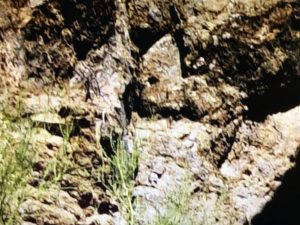
Credit: Jeff Howlett, Arcana Exploration & Discovery
The triangular marker (with hole) in the photo is believed by Howlett to be of Jesuit origin. It sits 15 feet from the mine. Howlett doesn’t believe it’s meant to point to the mine. Rather, he says it’s directing the Jesuit brothers to something else.
Many locals believe a second, lesser-known treasure exists in the same mountains as the Lost Dutchman’s Mine. That treasure is one left by the Jesuit Priests who, knowing their time in the New World was coming to a close, hid their riches – gold bars, candelabras, and chalices – so that one day much later their brothers to follow could reclaim them.
While the Arcana founder leaves much mystery to unravel and tales to be told, one can recognize the site – identified by Arcana – is unique and unusual, having drawn separate and distinct groups to its treasures.
The location is a little different than any other place around… mother earth and volcanic activity… when she erupted… the topography is, really, different… and allowed this gold to come up from below… and iron… and all these things to mix. It’s like you’re on the surface of the moon or one of the craziest places. – Jeff Howlett
The Place has a Strange Feel
Howlett describes a strangeness that resulted when near the Apache Thunder God carving. He said the guys would appear agitated, subdued, and curt – ready to leave. The team has captured photographic documentation of what could only be described as Spirit in a cave near the site. Howlett is not quick to make such conclusions but did state that other eyewitnesses to the photo see (without suggestion) the same spirit-like image.
On an opposite wall across the canyon from the mine is a carving of undisclosed nature. Please hurry and finish the book, Jeff! Howlett had been looking for it for 4 years when, finally, an animal – standing stoic– drew the team’s attention towards the carving, its location. That side of the canyon, which they’ve named Tobias, is preferred by the climbers. According to Jeff, the guys notice a presence felt everywhere – one side of the canyon feels innocuous, the other spooky.
It’s a god-awful place.
– Peralta daughter
Howlett says there are things on the site that are hard to explain. He and his team are not the sort to believe in oddities but of the area, Howlett says, If spirits exist, they’re probably here.
SPOOKED
There’s a stone house on the side of a canyon nearby the site, another clue left by the Dutchman. While exploring this area, the team encountered pushback from an unknown source. Two climbers had reached a lower ledge when suddenly a rock was catapulted, precisely aimed at each of their heads. These rocks didn’t fall, they were launched like baseballs. In his description, one of the climbers told Howlett who was waiting below, something with thumbs threw the rocks.
According to Howlett, there’d be no reason for anyone to be up in that area. Who would be up there? An escaped convict? A Black Legion member of the Apache who still protects the area? Sasquatch? Howlett doesn’t know the identity but is certain somebody was up there.
Dutchman’s Curse
Many who’ve searched for the mine or who’ve gotten close have met unfortunate circumstances. Such was the case for Walter Gassler who, after 53 years of searching, claimed to have found the site but suffered a heart-attack before he could return with the gold to be tested.
Howlett shared a story that seems to lend credence to this Curse of the Dutchman. On their 7th expedition in September 2019, the mine was finally breached by ONE of the team members. Later that evening at the Phoenix airport, this individual suffered a mysterious and sudden fall while riding a downward escalator. The team member fell 4-5 steps before colliding with the concrete floor. He cracked his head open and lay in a pool of blood. Paramedics transported him to the hospital where he recovered; however, no explanation for the sudden fall was identified.
The Need for Secrecy
Arcana is careful not to publicize the timing of their explorations. And, once in the area, they maintain a low profile. A Poker Face mentality is shrewd for any Dutchman, especially one with proof of the mine. While the website reveals much about their findings and its location, Howlett carefully measures what information to release and what details to withhold. Too much can give away the location. Howlett is careful not to include the horizon in any of the pictures revealed online.
It’s imperative, for obvious reasons, that they conclude their exploration before the location is known. While it can’t be mined, there’s still treasure at stake. The story, itself, is gold.
Committed to Accuracy
The Arcana team started out as novices, riding ATVs into the Superstition Wilderness, with few supplies and tennis shoes, but they transitioned into experts with high tech equipment and support from others in relevant areas of academics and experience. No other individual or group has been able to corroborate clue after clue.
Howlett has done his research. He’s credible, well-versed in history, and measured in his responses – confident and without exaggeration. He’s called in experts in both archeology and history, and the Arcana team is carefully and thoroughly vetting every clue and discovery.
This fascinating story is not without a great storyteller. Over hours of conversations and interviews, Howlett has shared (what he can) of Arcana’s discoveries, sustaining intrigue and delivering with punch. Howlett has the creative amplitude to solve an age-old mystery AND unveil a new one. We’ll be surprised if the book isn’t a BEST SELLER! If you liked Raiders of the Lost Ark, this one will be for you! The book release is anticipated towards the end of 2020. Look for the title ARCANA.
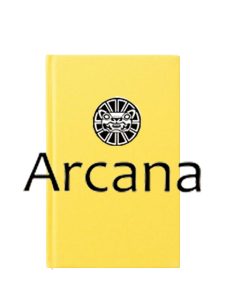
Gold
It was such fun getting to know Jeff Howlett and hearing about his journey. There are some who’ll wish he hadn’t come forward with his discovery, in the event it becomes a historical site without access. But one cannot discount the historical record made by Arcana. They went in search of The Lost Dutchman’s Goldmine and found much more – a history otherwise unknown can now be uncovered, preserved and shared. Certainly, there is no value in a hidden treasure.
I didn’t get to know the other members of the team, personally, but Jeff shared harrowing and honorable stories of them on and off the mountain. They’re the type of men you’d want to find gold and the type of men you’d want to celebrate for verifying a 125-year Legend. But what’s to admire even more than the remarkable discoveries is the affection between friends. Some of the best treasures, it seems, are not hidden.
What first drew me into the story was Jeff’s sentiment about their expeditions. “The gold,” he says, “is in the journey to discovery.”
“The most fulfilling things in life are the comradery and friendships and the experiences that are shared together.”
– Jeff Howlett, Arcana Exploration & Discovery
Juliana is an entertainer and writer. She’s currently working on a book about her Life With A Monkey. Check out her website at www.julianafay.com.
AFTERLIFE
Egyptian Book of the Dead – Afterlife Experiment
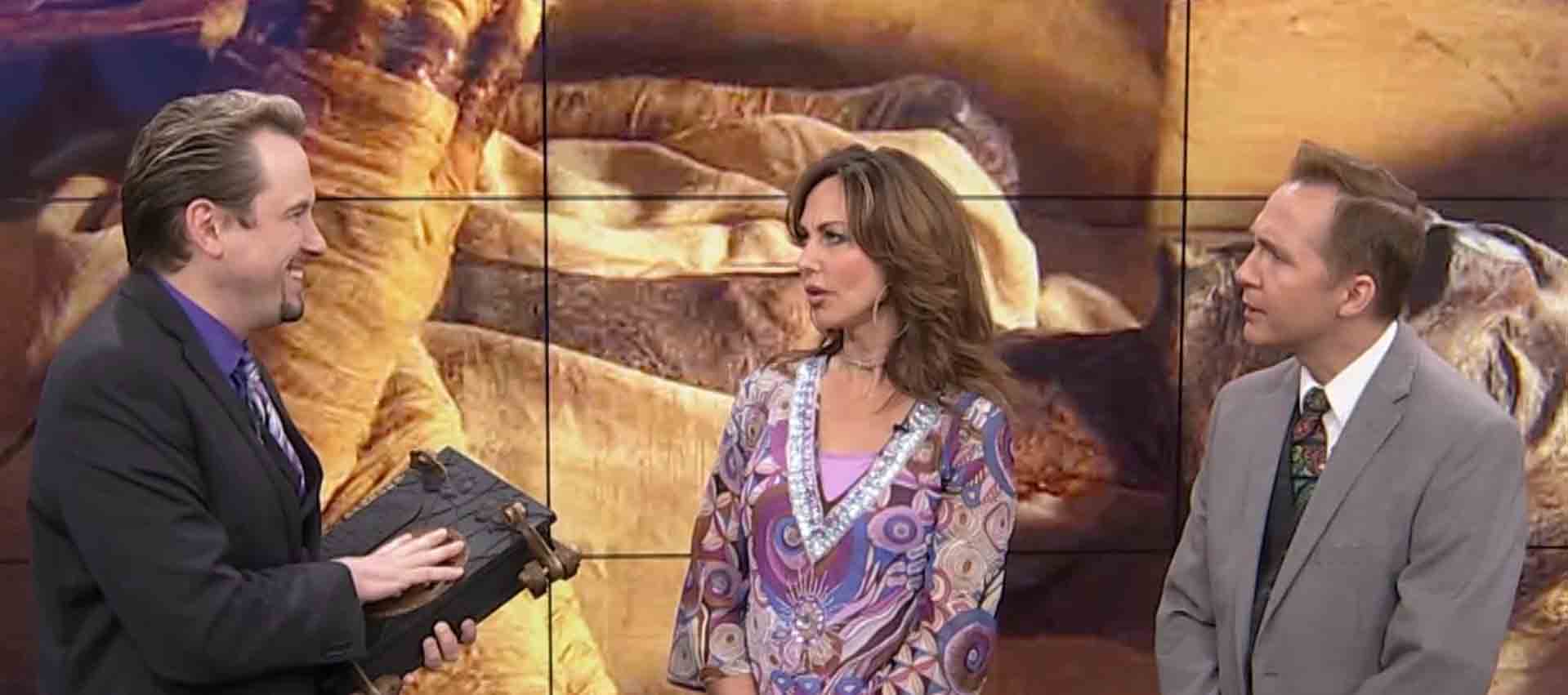

In this segment I shared with Jeremy and Kelly my grandfathers copy of the Egyptian book of the Dead and the Mummy remains that I acquired for our paranormal experiment that we do every October.
If you want to see the experiment live We are doing shows on Oct 11, Oct 19th, and Oct 26th in Eureka Springs. This is the Biggest show of the year and there is more than just the Mummy Experiment. Please see the video below for more.
Notes from Intrigue Journal Appearance:
Can you believe it has almost been a year since Kelly came down to Eureka Springs and did the segment on the Halloween City of Eureka springs – and shortly there after you invited me to come here weekly and talk about subjects that I think your audience will find INTRIGUING. That’s my job but its also my Passion because its how I was raised.
My Grandparents were members of Secret Societies.
My Grandfather was the caretaker of the Temple where his fraternal brother assembled.
He often brought me there – and while to took care of the place – I would be EXPLORING. I knew every room, and passage in that place. It is one of the few remaining buildings in Minnesota of that quality.
The Freemasons have real admiration of an Ancient Culture that was obsessed with the Afterlife – Ancient Egypt. If you have ever been in one of these temple you will certainly see the inspiration. We have performed in many of them around the country. Look at this Egyptian Theater in Guthrie Oklahoma, and then when we performed at McAlester OK – you would have thought we were in a temple in Luxor or Cairo! They are SPECTACULAR Buildings.
And The Egyptians were HELL BENT on the Afterlife.
This is a culture that would bury their dead –
they would PREPARE THEM for their Journey into the next Chapter.
They would build fantastic tombs for their leaders.
And they even wrote a book. unquestionably one of the most influential books in all history.
- Embodying a ritual to be performed for the dead, with detailed instructions for the behaviors of the disembodied spirit in the Land of the Gods,
- it served as the most important repository of religious authority for some three thousand years.
- Chapters were carved on the pyramids of the ancient 5th Dynasty,
- texts were written in papyrus,
- and selections were painted on mummy cases well into the Christian Era.
- In a certain sense it stood behind all Egyptian civilization.
Book of the Dead, or as it is otherwise known, The Book of the Great Awakening.
My Grandfathers Masonic Temple had an Egyptian Reading room – not as fabulous as the other temples I have performed at recently – but as a child I was always fascinated by their copy of the Book of the Dead. My Grandfather didn’t want me to go near it – and I respected his wishes. And when he died, I was devastated. And as an Adult I returned to his Temple.
Would you believe that many of the scholars and archeologists that are discovering these ancient sites also believe that there might be something to the idea of a supernatural Voyage into the Afterlife.
I have interviewed Scotty Roberts – the Publisher of Intrepid magazine and We talked about Egyptologists that have been in these dig sites and what they have experienced…
Play Scotty Roberts Sound Byte #1 There is Paranormal Activity in those temples.
So I have the book – and I have done the research – but if I wanted to do an experiment from this book – there is just one thing I am missing. An Ancient Egyptian!
I know – what I am saying might be creepy or Crazy – but I don’t care. Its still a fascinating premise.
You can’t just order the remains of an Ancient Egyptian on Amazon.
-
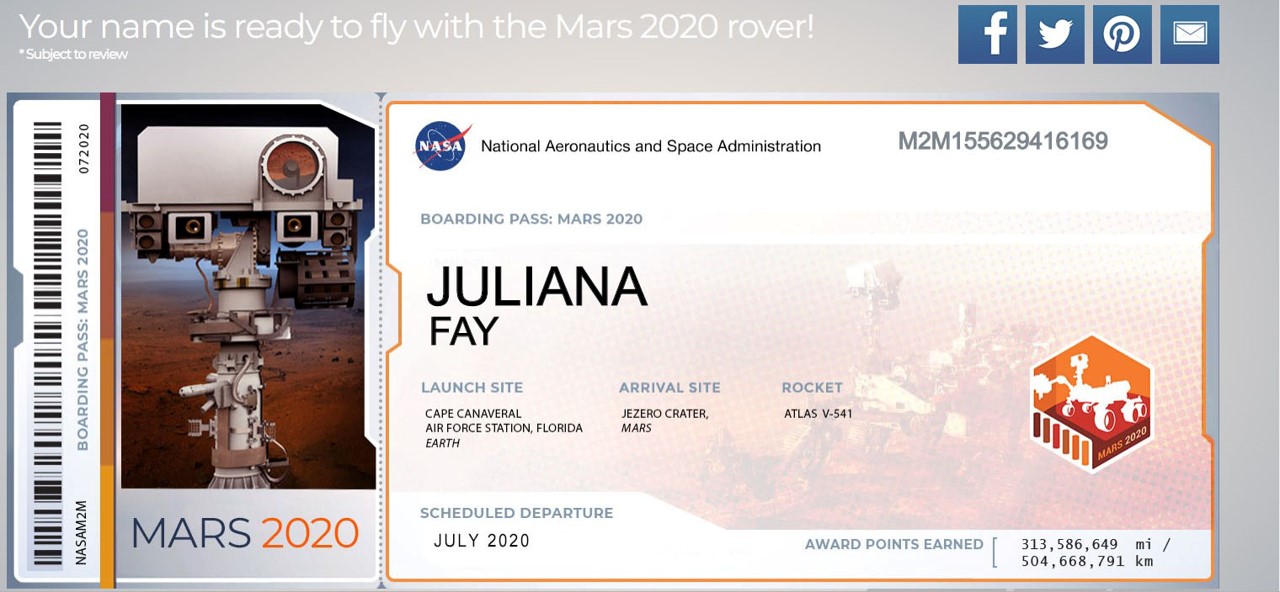
 SPACE & COSMOS5 years ago
SPACE & COSMOS5 years agoHumans in Space!
-

 Intriguing people4 years ago
Intriguing people4 years ago108 Year old woman survives Covid!
-

 ghosts5 years ago
ghosts5 years ago5 of the most Mysterious Ghost Ships!
-
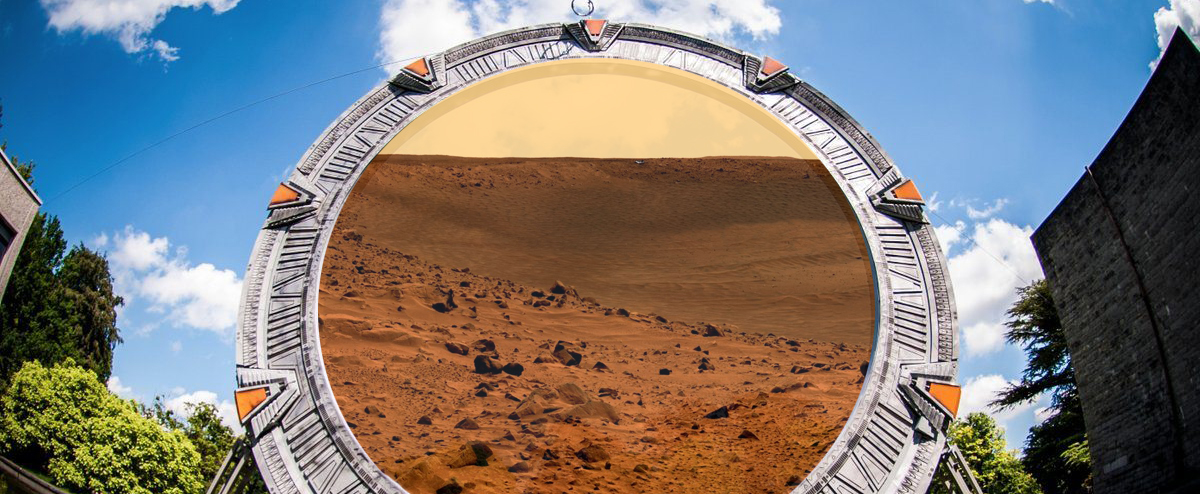
 CONSPIRACIES4 years ago
CONSPIRACIES4 years agoEinstein Equations & Tesla’s Notes – Time Travel Might Be Reality
-
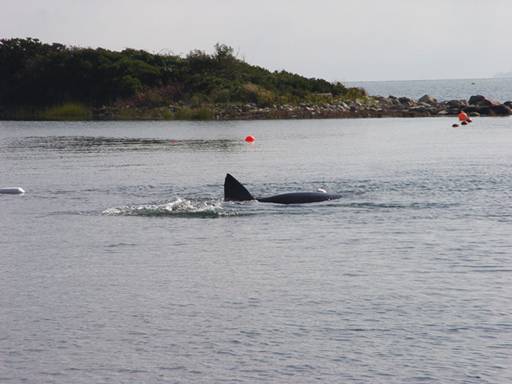
 Uncategorized4 years ago
Uncategorized4 years agoSharks in Great lakes and Mississippi River?!
-
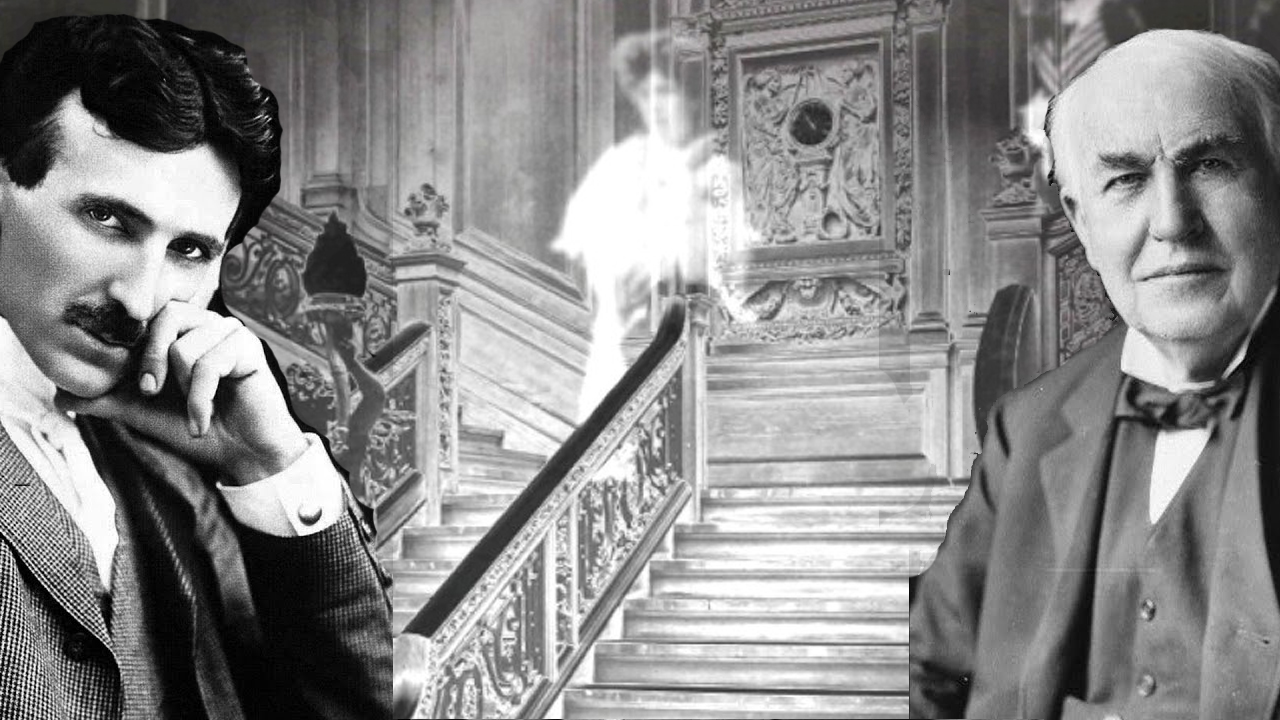
 ghosts4 years ago
ghosts4 years agoTesla & Edison’s Ghost Machines!
-

 SPACE & COSMOS5 years ago
SPACE & COSMOS5 years agoHappy 50th Anniversary Apollo!
-

 SPACE5 years ago
SPACE5 years agoELEVEN ways NASA technology is applied to Terrestrial Life



